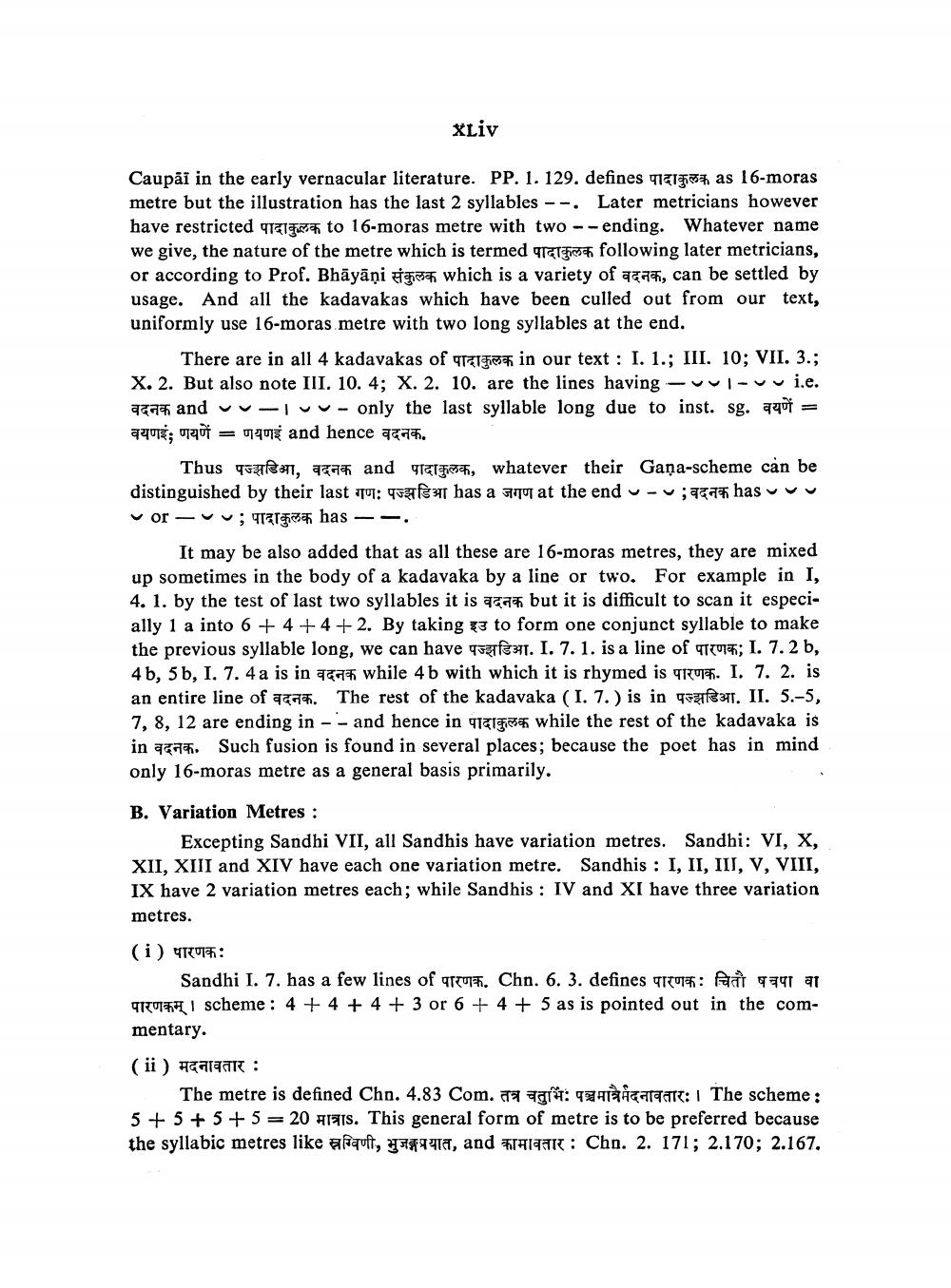________________
XLIV
Caupās in the early vernacular literature. PP. 1. 129. defines 11h as 16-moras metre but the illustration has the last 2 syllables --. Later metricians however have restricted 911 to 16-moras metre with two --ending. Whatever name we give, the nature of the metre which is termed gratis following later metricians, or according to Prof. Bhāyāņi simti which is a variety of acat, can be settled by usage. And all the kadavakas which have been culled out from our text, uniformly use 16-moras metre with two long syllables at the end.
There are in all 4 kadavakas of rain in our text: I. 1.; III. 10; VII. 3.; X. 2. But also note III. 10. 4; X. 2. 10. are the lines having -uuluu i.e. 909and vuelvu- only the last syllable long due to inst. sg. qqot = 4401; 970 = 9903 and hence 777.
Thus पज्झडिआ, वदनक and पादाकुलक, whatever their Gana-scheme can be distinguished by their last गणः पज्झडिआ has a जगण at the end ---वदनक has ~~ or —VU;
has — -. It may be also added that as all these are 16-moras metres, they are mixed up sometimes in the body of a kadavaka by a line or two. For example in I, 4. 1. by the test of last two syllables it is azan but it is difficult to scan it especially 1 a into 6 + 4+4+2. By taking <3 to form one conjunct syllable to make the previous syllable long, we can have gift . I. 7. 1. is a line of 1701*; I. 7.2 b, 4b, 5b, I. 7. 4a is in 1991 while 4b with which it is rhymed is qu. I. 7. 2. is an entire line of a47h. The rest of the kadavaka (I. 7.) is in safa. II. 5.-5, 7, 8, 12 are ending in -- and hence in qiigse while the rest of the kadavaka is in 1997. Such fusion is found in several places; because the poet has in mind only 16-moras metre as a general basis primarily.
B. Variation Metres :
Excepting Sandhi VII, all Sandhis have variation metres. Sandbi: VI, X, XII, XIII and XIV have each one variation metre. Sandhis : I, II, III, V, VIII, IX have 2 variation metres each; while Sandhis : IV and XI have three variation metres.
(i) 40h:
Sandhi I. 7. has a few lines of qua. Chn. 6. 3. defines TITU: At 941 an TUH | scheme: 4 + 4 + 4 + 3 or 6 + 4+ 5 as is pointed out in the commentary. (ii) Hargai :
The metre is defined Chn. 4.83 Com. 79 014: 2419CACH: 1 The scheme : 5 + 5 + 5 + 5 = 20 HEIS. This general form of metre is to be preferred because the syllabic metres like स्रग्विणी, भुजङ्गप्रयात, and कामावतार : Chn. 2. 171; 2.170; 2.167.




